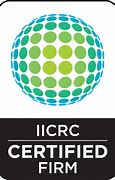FAQs

Online Booking
Easy online booking to schedule your free emergency inspection to fit your schedule

Certified Technicians
All our staff has been certified in all aspects of restoration to help restore your property

Emergency Response
24/7 Emergency available 365 days a year to help you in your time of need

Insurance
We work with all insurance carriers to ensure your claim is handled efficiently and quickly
Answer: Insurance companies can typically refer you to a list of contractors that they have experience with, or are preferred vendors on their programs. We are a member of a number of the local programs that are supported by your insurance carrier, and likely we have worked with your carrier before. We’re glad to work with any insurance company, or with you. It’s our hope that something like the event you’re experiencing happens to you only this one time – so we have this one opportunity to get it right for you. We will likely work with your insurance company hundreds of times, so we want to keep the experience for you excellent today, and excellent for them for years to come!
Answer: These are terms used in the insurance industry to represent how your property and/or belongings are replaced or repaired. Most insurance policies offer Replacement Cost Value or RCV coverage. RCV refers to what the cost is today of replacing the building materials or possessions with “like kind and quality” items or products. This is a typical insurance policy. Insurance companies will typically apply a “depreciation” to the value of the products on the repair side of your policy, and hold back that amount until the repairs are completed. ACV or Actual Cash Value coverage: This is a much more rare form of insurance coverage, and it often comes at a steep discount to an RCV plan. These plans, however are a risky proposition for property owners, because it applies UNRECOVERABLE depreciation to your claim. For example, let’s say you have an ACV policy, and your home is damaged by flooding, and the carpet requires replacement. If the age of the carpet is 10-15 years old, it’s reaching the end of its usable life. Let’s make the math easy: If the cost to replace this carpet is $5,000.00 and the usable life of the carpet is 15 years, and you installed it 10 years ago, it has approximately 30% of its usable life left. The insurance company deducts 70% of the replacement value to arrive at the “Actual Cash Value” of what the cost of your carpet is today. So instead of getting $5,000 to replace your carpet, you’re now only going to receive $1,500.00 to replace it today… which leaves you a pretty sizeable out-of-pocket expense when we’re working with you to replace it. So, as we always recommend, check with your agent or carrier regarding your coverage. It’s important to understand where your current limits and policy coverage’s are. You’ll be glad you did.
Mitigating or mitigation activities are common terms you will hear us, and others refer to throughout the insurance industry. Mitigation simply means to lessen or reduce the damage caused by the exposure of your property to the damage-causing elements (fire, water, vehicle impacts, tree impacts, etc.) If you review your insurance policy carefully, you’ll often find specific wording regarding your responsibility to do as much as possible to prevent damage and reduce the property’s exposure to additional harm.
Answer: We hear a lot that “my house was built in 20xx, there’s no way it has asbestos…” unfortunately, while you might be right, there’s no way to tell without testing. The regulations require us to test every property where we are potentially causing disturbance to “suspect materials” during the removal phase before we can address them. We appreciate the regulation because it keeps you, your loved ones, and our employees safe
Answers: Disaster Property Restoration can be your guide through this process. While each property is different, we usually recommend an Industrial Hygienist “IH” be enlisted to help us track the source of the issue, and provide “air clearance tests” for you when we’re done with our cleaning process. We recommend a site inspection by one of our experts who can guide you through the process. Immediately we recommend that you keep those with compromised immune systems (the young, or the elderly, or those with known respiratory issues) away from the affected area. Try to eliminate air movement in that area to avoid contaminating other areas. Call Disaster Property Restoration as soon as you discover these issues, and schedule a visit with us so we can better assist you with this process.
Answer: Again, we recommend you check with your carrier, or agent, but typically ground water is NOT a covered peril. Water that intrudes through a foundation or window well that comes from/originates at the ground is a typical exclusion on most policies. This flood rider is typically an add-on to a standard insurance policy, and is applied to homes/structures that are in declared “flood plains” which are not very common here in Michigan. Most properties, when sold, have to undergo a flood plain survey which would trigger this rider on a policy as the property is built, or changes hands. If you think you’re at risk for potential water intrusion from Mother Nature, it’s good to check with your agent. If you are close to a water source, but outside a typical flood plain to possibly purchase a rider like this if it’s available. The typical water damage from flooding waters can range anywhere from $1,500 to $10,000 in damage. It’s worth it for a little peace of mind.
